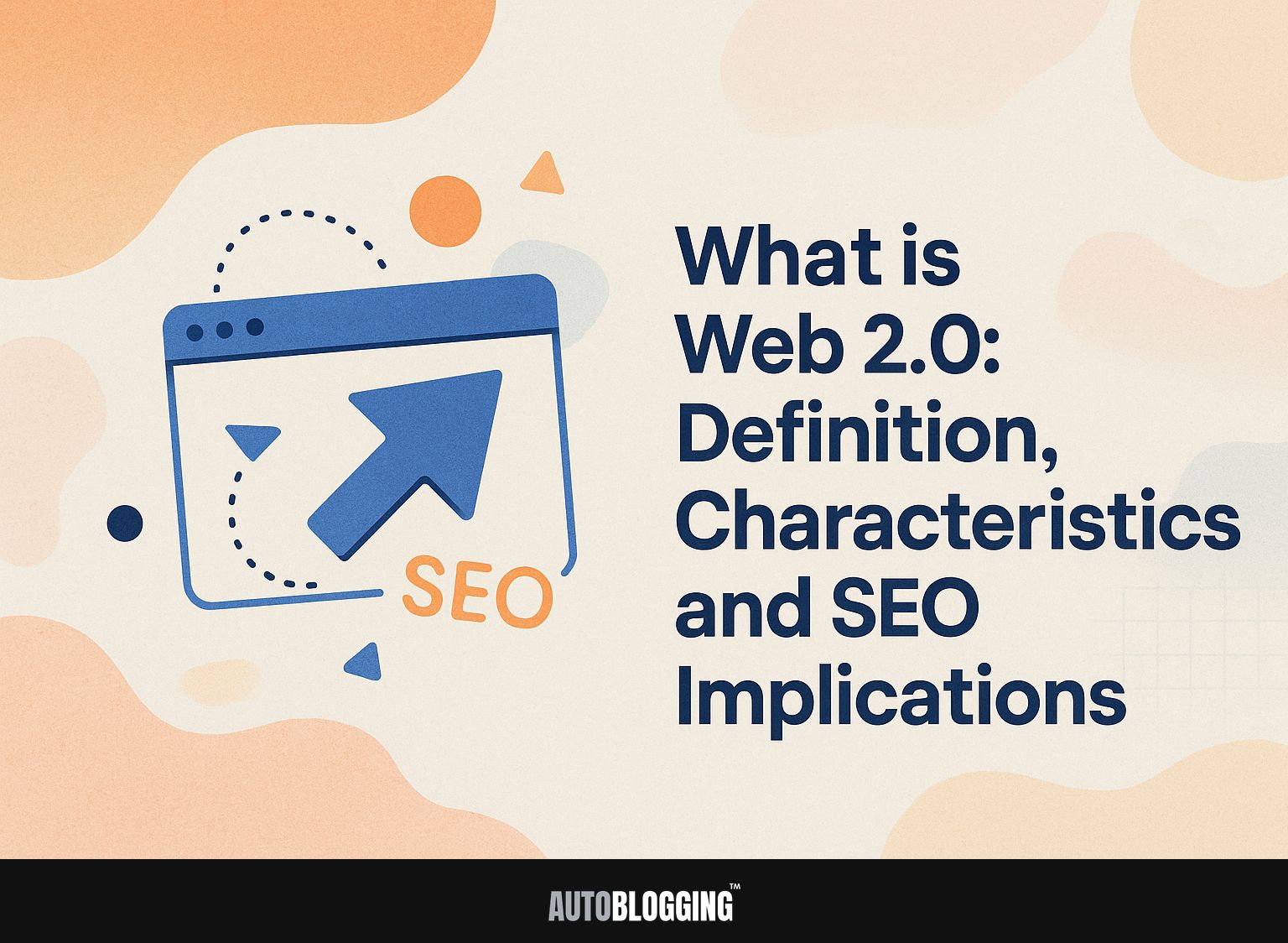
Web 2.0 has changed the internet, leading to a time where content created by users is the most important. Platforms like Facebook show this change, allowing users to share and work together. Knowing about Web 2.0 is important for improving your online presence and SEO strategies, especially by using good link-building methods. In this article, we will explain what Web 2.0 means, its main features, and how it affects SEO, which will help you understand this changing online world for improved results.
Key Takeaways:
- Web 2.0 is the evolution of the internet, characterized by user-generated content, social networking, collaboration, and rich user experiences.
- The SEO implications of Web 2.0 include changes in search engine algorithms, the importance of user engagement, and the need for effective content marketing strategies.
- While Web 2.0 offers many benefits, it also presents challenges and limitations such as information overload and privacy concerns. Web 2.0 is always changing, offering new ways for users to interact and moving towards Web 3.0.
Contents
1. Overview of the Internet Evolution
The internet has transitioned through distinct phases, from the static pages of Web 1.0 to the interactive, community-driven platforms of Web 2.0. Web 1.0 primarily featured static websites, built using basic HTML that provided limited interactivity.
Users could only consume content, like reading articles and viewing images, without engaging with it. This era set the groundwork for Web 2.0, characterized by user-generated content and social media platforms.
Technologies like HTML5 allowed for better multimedia features and easier interactions, enabling lively content, user comments, and working together in real-time. Because of this, platforms like Facebook and YouTube grew rapidly, showing how simple sharing and community interaction changed the online world.
Related insight: The Rise of AI-Powered Article Writing: A Brief History illustrates how AI technology is shaping the future of content creation, echoing the transformative impact seen with Web 2.0.
2. Transition from Web 1.0 to Web 2.0
The shift from Web 1.0 to Web 2.0 involved a move from read-only content to a participatory web where users actively contribute and engage. This change brought in platforms focusing on user engagement and creating content.
Static HTML websites have changed into interactive platforms like Facebook, where people can share updates and comments immediately. Likewise, WordPress developed into a tool that allows anyone to publish content easily, helping create blogs and articles that start conversations.
This change increased user interaction and allowed user-generated content. Platforms like YouTube let users upload videos, changing how people share and view information online.
Definition of Web 2.0
Web 2.0 focuses on content created by users, connecting people through social networks, and allowing people to work together on open platforms. As these platforms evolve, understanding how AI advancements, such as Google’s AI enhancements, impact the online landscape is crucial.
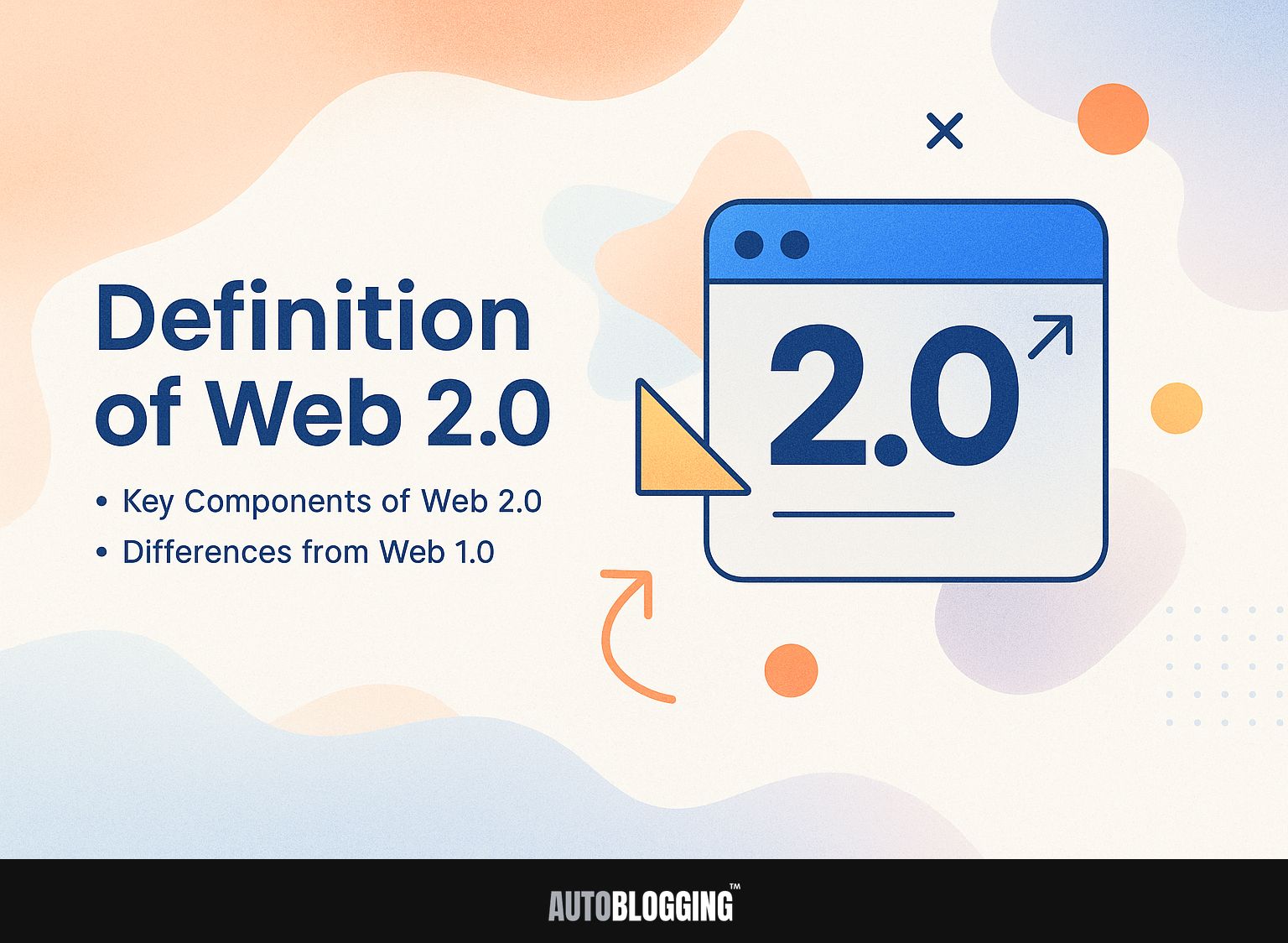
1. Key Components of Web 2.0
Key components of Web 2.0 include user-generated content, social networking applications, and collaborative tools that enable knowledge sharing.
People can make and share videos on sites like YouTube, which is a key part of Web 2.0. This allows people all over the world to talk to each other.
Social networking sites like Facebook and Twitter help people interact by letting them connect, share news, and work together on projects.
At the same time, tools like Google Docs let people work together by enabling them to edit documents simultaneously, simplifying collaboration. These components work together to improve visibility and interaction, resulting in a more enjoyable online experience for both users and communities.
2. Differences from Web 1.0
Web 2.0 differs from Web 1.0 in its focus on interactivity, real-time collaboration, and a user-centric approach to content management. This shift has significant implications for how users engage with online platforms.
For example, Web 1.0 sites were largely static and informational, while Web 2.0 encourages users to contribute through blogs, social media, and wikis. Technologies like AJAX allow content on a webpage to update in real-time without needing to reload the entire page, improving how users interact with the site.
Tools like WordPress and Medium allow users to make and share their own content easily, encouraging a culture where people actively participate. This change shifts us from just using content to working together to create it, changing the online world significantly.
Characteristics of Web 2.0
Web 2.0 includes features that give users more control and encourage active online communication.
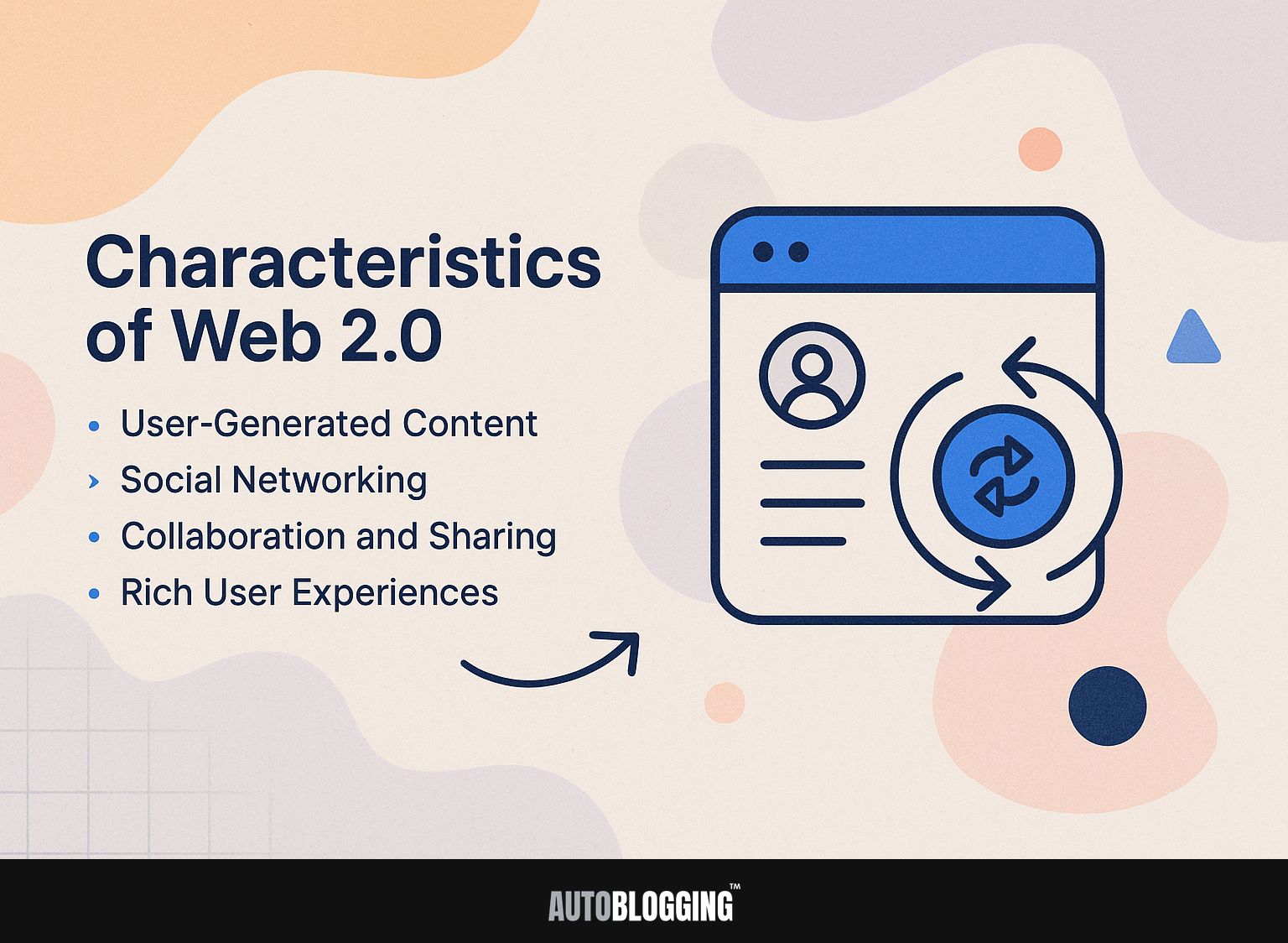
1. User-Generated Content
User-generated content forms the backbone of Web 2.0, allowing individuals to contribute, share, and interact with multimedia across platforms. This user-driven approach has turned platforms like YouTube and Wikipedia into highly interactive sites.
For instance, videos on YouTube-often featuring user reviews or tutorials-can drive traffic and influence SEO, as they contribute to a staggering 1 billion hours of watch time daily. Similarly, Wikipedia boasts over 6 million English articles, with contributions from users worldwide enhancing its credibility.
Businesses should include user-generated content in their plans. This helps increase interaction and improve search rankings through social proof.
2. Social Networking
Social networking platforms such as Facebook and Twitter have changed how people interact, share, and talk with each other online. These platforms help people connect and build active online groups, improving user participation.
Reports indicate that Facebook has over 2.8 billion monthly active users, while Twitter boasts around 330 million. Brands use these communities to strengthen their digital marketing plans. They often use tools like Sprout Social and Hootsuite to monitor engagement numbers.
Circling back, a 2021 study found that businesses engaging with their audience on social media enjoy up to 20% higher customer satisfaction levels. This highlights the need to customize content to fit what the community likes.
3. Collaboration and Sharing
Collaboration and sharing are central to the Web 2.0 experience, enabling users to work together seamlessly across various platforms. Tools like Google Drive and Slack demonstrate this shift, making collaboration quicker and simpler.
Google Drive facilitates document sharing and real-time editing, allowing teams to collaborate on reports or presentations from any location. For example, a marketing team can collaborate on a campaign plan, with each member sharing their ideas right away.
Meanwhile, Slack is a platform for communication that allows users to create channels for projects, share files, and set notifications.
An instance of successful collaboration is GitHub’s open-source projects, where developers worldwide contribute to software advancements, demonstrating the power of collective knowledge and contribution.
4. Rich User Experiences
Rich user experiences are a hallmark of Web 2.0, characterized by fluid interfaces and interactive multimedia elements enabled by technologies like AJAX and HTML5.
Platforms like Spotify use AJAX to load songs quickly, so users can move through the app smoothly without needing to reload the page.
Similarly, Pinterest employs HTML5 to support smooth scrolling and image loading, enhancing the visual experience.
To implement these technologies, developers can use libraries like jQuery for AJAX calls or tools like Bootstrap for responsive HTML5 designs. These applications prioritize user experience, ensuring users stay engaged by simplifying interactions and providing quick access to content. This results in higher retention rates.
Examples of Web 2.0 Platforms
Many platforms represent the ideas of Web 2.0, each encouraging user interaction in different ways.
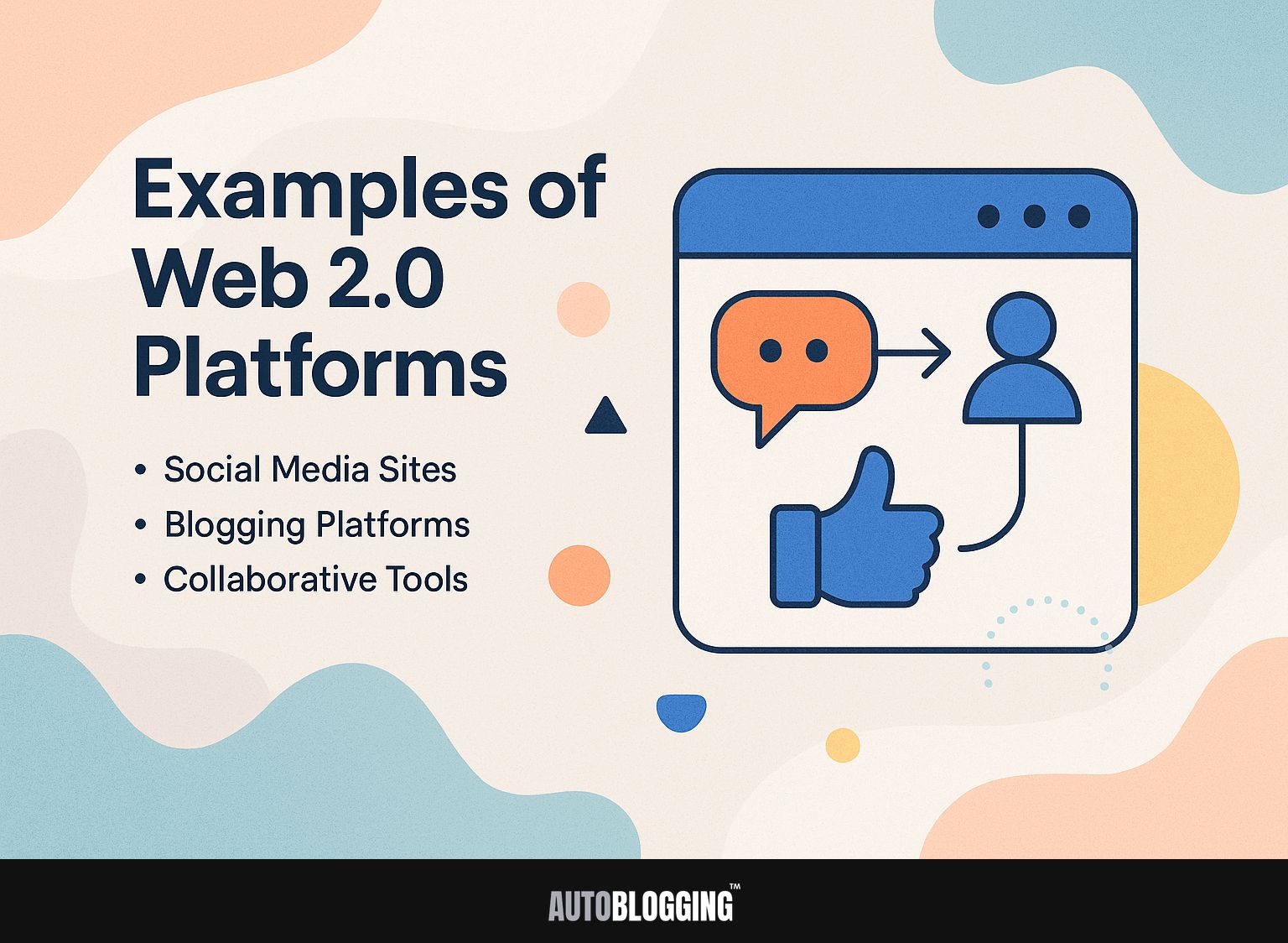
1. Social Media Sites
Social media sites like Facebook, Twitter, and Instagram exemplify Web 2.0 by enabling users to create, share, and interact with content seamlessly. These platforms offer distinct functionalities that drive user engagement. User profiles provide customized experiences, and news feeds organize content to keep users updated about their contacts.
Sharing options make it easy to spread posts and multimedia, increasing their audience. Statistics indicate that over 3.6 billion people used social media in 2020, with platforms like Instagram boasting engagement rates as high as 1.22% per post.
This shows how important these platforms are in online marketing, as businesses can reach their intended audiences through customized content plans.
2. Blogging Platforms
Blogging platforms like WordPress and Tumblr let users share their thoughts and ideas and help create communities around various topics. WordPress lets you customize it with a wide variety of themes and plugins to make it better.
For example, Yoast SEO helps make content better for search engines, while Elementor lets users design page layouts without difficulty.
Tumblr focuses on images and connecting people. This makes it perfect for short blogging and sharing different types of media.
Both platforms cater to different audiences: WordPress is preferred by professionals for detailed blog posts, while creators on Tumblr thrive in more casual, image-driven environments. Each platform’s community engagement varies significantly, influencing user choice.
3. Collaborative Tools
Collaborative tools such as Google Docs and Trello facilitate teamwork and efficient project management through real-time collaboration. These tools help organizations make their work processes more efficient.
For instance, Google Docs allows multiple users to edit documents simultaneously, enhancing feedback and reducing email chains. Research by McKinsey showed that groups using teamwork software can get tasks done up to 30% faster. Trello, on the other hand, uses boards and cards to visually organize tasks and deadlines, promoting clear accountability.
Companies like Buffer have successfully adopted these tools, reporting a 50% faster project turnaround while improving team engagement. By using these tools, organizations can cooperate more effectively.
SEO Implications of Web 2.0
The rise of Web 2.0 has changed how SEO is done, affecting how search engines rank websites and highlighting the need for user involvement.
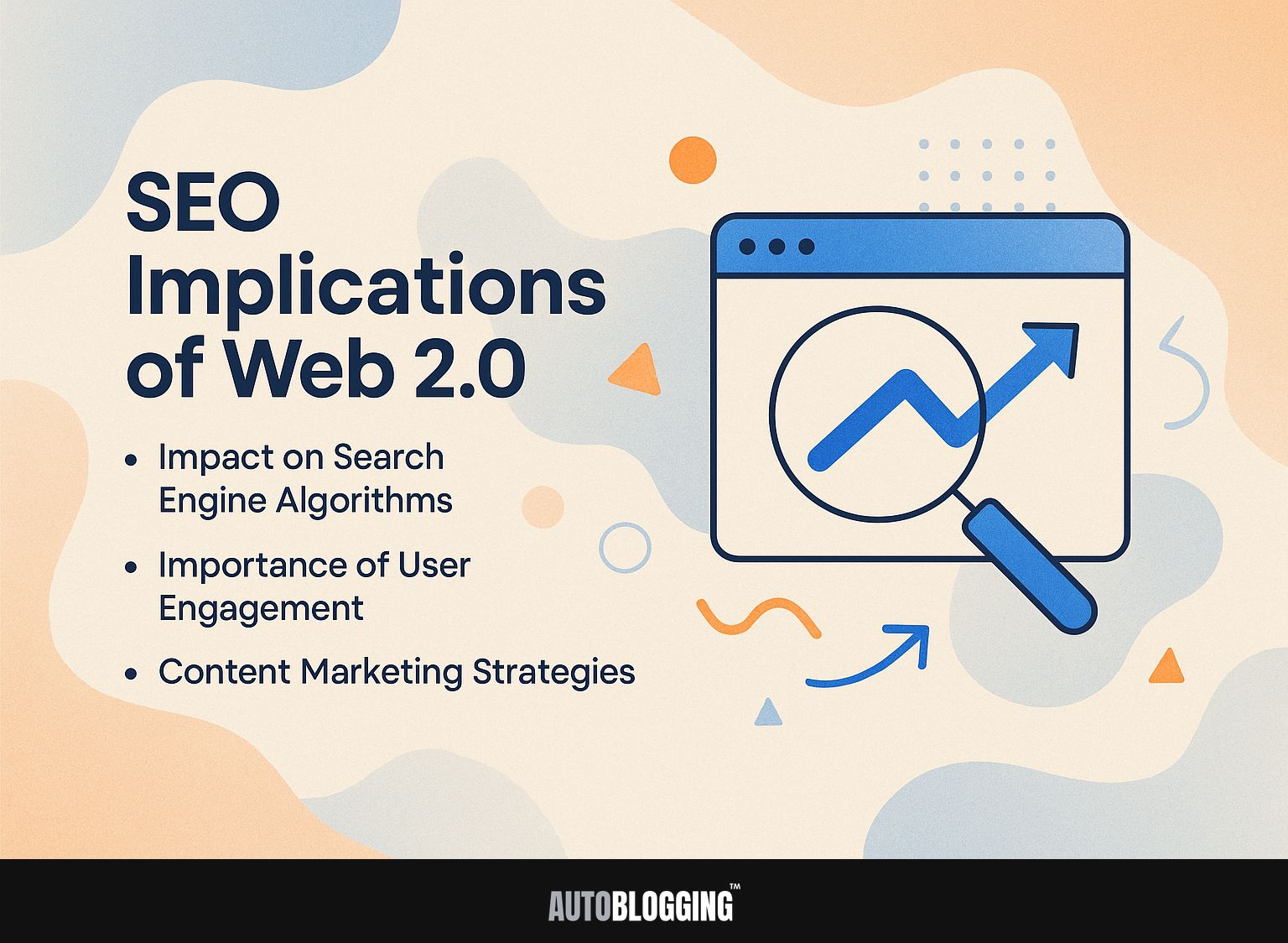
1. Impact on Search Engine Algorithms
Web 2.0 has led search engines to focus more on how relevant content is and how users interact with it, changing the usual SEO methods.
For example, Google’s Panda update targeted the quality of content, giving preference to sites with detailed, original articles and punishing those with weak content. Likewise, the Hummingbird update focused on improving how well search results match what users are really looking for.
Website owners should make content like quizzes, polls, and videos to get users to interact. Tools like Google Search Console can track performance metrics, ensuring content strategies are aligned with these algorithm shifts.
Regularly updating older articles with fresh statistics and engaging media also helps maintain relevance and user interest.
2. Importance of User Engagement
User engagement is now a critical factor in SEO, with metrics like bounce rates and time on page influencing search rankings significantly.
To increase user participation, try adding interactive content like quizzes and polls. These activities keep users engaged and invite them to take part.
Creating a community with content from users or discussion boards can help form stronger bonds, while frequent content updates encourage visitors to come back.
Tools like Disqus or Facebook Comments can facilitate discussions, and monitoring metrics through Google Analytics helps identify which strategies yield the best results.
By looking at how users interact, you can adjust your strategy to increase both user interaction and SEO results.
3. Content Marketing Strategies
Web 2.0 necessitates innovative content marketing strategies that capitalize on user-generated content and social media integrations.
To make the most of Web 2.0 features, brands can build community interaction using platforms like Instagram and TikTok.
For example, Coca-Cola’s ‘Share a Coke’ campaign urged people to share bottles with their names on them, leading to more than 500,000 photos posted on social media.
Tools like Hootsuite can schedule posts and track user engagement, while platforms like BuzzSumo help identify trending topics for content creation.
Asking customers to send in their testimonials or reviews helps establish trust and increases visibility on different platforms, benefiting both the brands and their customers.
Challenges and Limitations of Web 2.0
Although Web 2.0 has made progress, it still has problems like too much information and privacy concerns that users have to deal with.
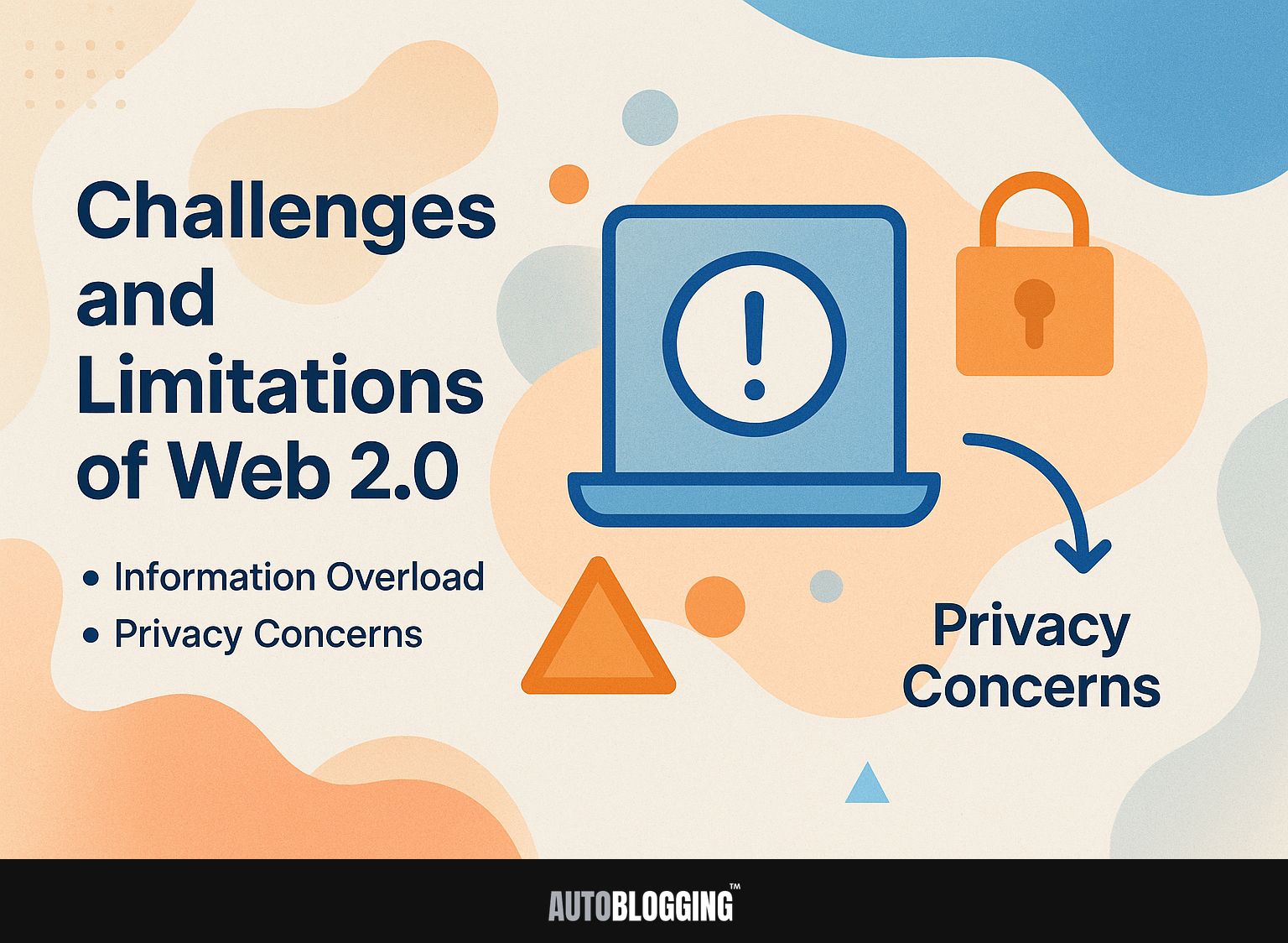
1. Information Overload
There is so much content online that it can be hard for people to find what they need. To simplify content browsing, users can use custom feeds with apps like Feedly or Flipboard. These apps allow you to select news collections that suit your interests.
Utilizing content curation tools such as Pocket can help save articles for later reading, reducing the need to multitask.
Setting aside dedicated time for content consumption-perhaps 30 minutes daily-can also combat the overwhelming nature of constant information influx.
By scheduling specific blocks for focused reading, users can improve retention and engagement with relevant material.
2. Privacy Concerns
Privacy concerns have escalated in the Web 2.0 era, affecting how users share personal information across platforms.
To safeguard your data, start by tightening your privacy settings on social media. For example, adjust Facebook’s privacy settings to limit who can see your posts and profile details.
Consider using tools like a VPN (Virtual Private Network) to conceal your online activities, making it harder for others to track you. It’s also wise to regularly review and delete apps that access your data.
Enable two-factor authentication across platforms to add an extra layer of security. By following these steps, you can greatly improve your online privacy.
Future of Web 2.0
The outlook for Web 2.0 is positive, with changes in how people engage online suggesting even more engaging online experiences.
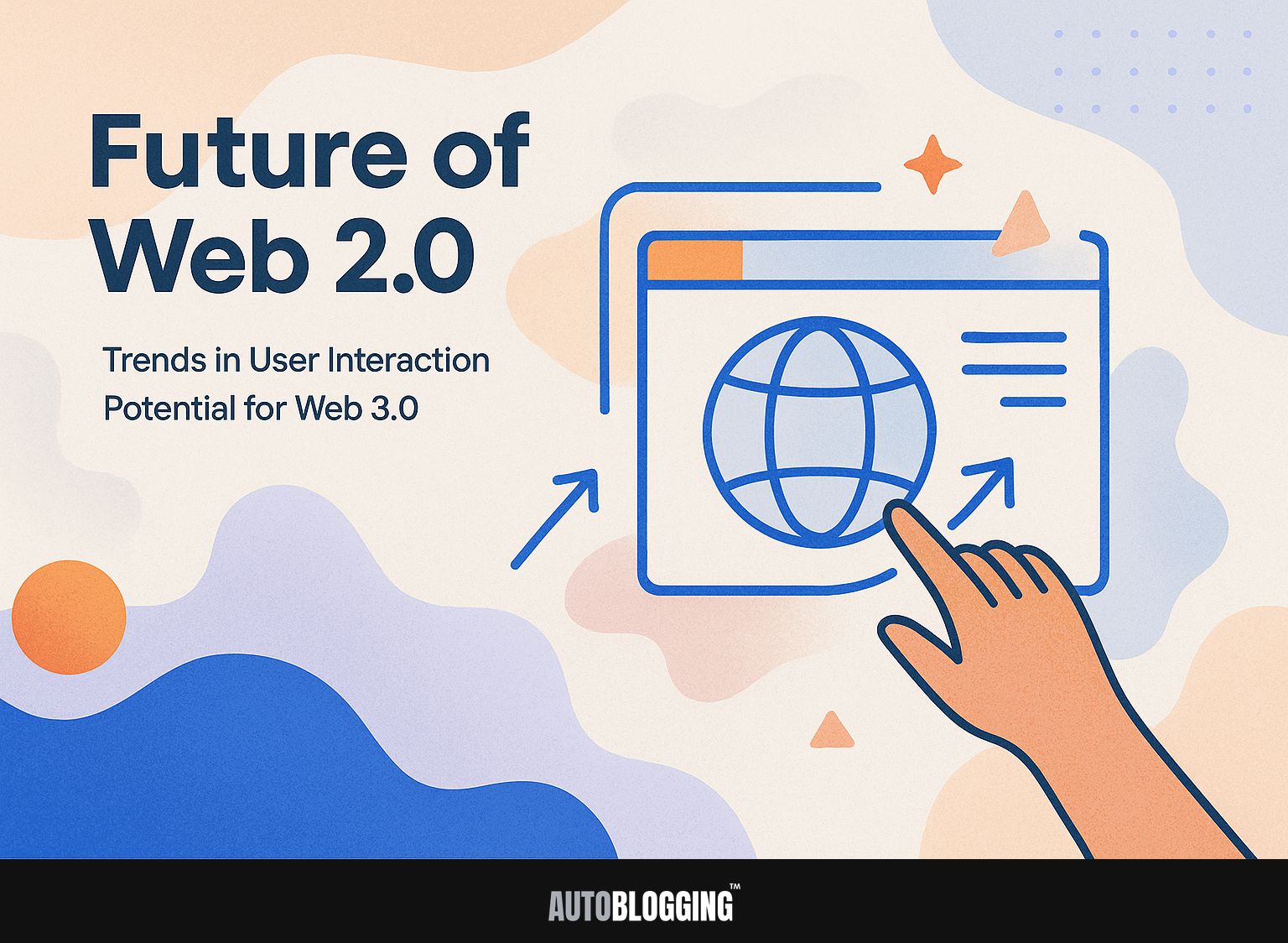
1. Trends in User Interaction
Emerging technologies such as voice search and augmented reality are altering the way people engage on the internet.
Companies are changing their websites to work better with voice search. For instance, implementing structured data markup helps search engines understand content better, improving visibility.
IKEA offers apps that use augmented reality, allowing customers to visualize furniture in their living spaces before making a purchase. This interaction increases user involvement and reduces return rates.
Businesses are spending more on these technologies because they understand that satisfying customers is important for differentiating themselves in a tough market.
2. Potential for Web 3.0
The move towards Web 3.0 points to upcoming platforms that give more power to users, allowing them to contribute and control their own content.
Web 3.0 builds upon the foundations of Web 2.0 by addressing key limitations, such as centralized control and data privacy. For example, users can use blockchain technology to prove ownership of their data, allowing them to benefit fully from their content.
Decentralized applications (dApps) and platforms like Ethereum allow people to interact directly with each other without middlemen, promoting trust and honesty.
Using artificial intelligence, online experiences can be customized according to how users interact, while keeping their privacy secure. The goal of this change is to make online spaces equal for all users.
Frequently Asked Questions
1. What is Web 2.0?
Web 2.0 is the next phase of the internet, marked by the growth of content created by users and interactive websites.
2. What are the characteristics of Web 2.0?
Web 2.0 describes the change from unchanging web pages to platforms that are lively and engaging. It involves users taking part and working together, as well as the use of social media and online applications.
3. How does Web 2.0 affect SEO?
Web 2.0 has a significant impact on SEO as it emphasizes the importance of quality content, inbound links, and engagement with users. Search engines also give preference to websites that are regularly updated and have a strong social media presence.
4. What are some examples of Web 2.0 technologies?
Some examples of Web 2.0 technologies include social networking sites like Facebook and Twitter, online collaboration tools like Google Docs, and content sharing platforms like YouTube and Flickr.
5. What are the SEO implications of user-generated content in Web 2.0?
User-generated content, such as product reviews or comments on blog posts, can greatly impact SEO by providing fresh and relevant content for search engines to crawl. It also helps to establish trust and credibility with users.
6. How can businesses use Web 2.0 for SEO purposes?
Businesses can use Web 2.0 platforms for SEO by creating good content, engaging with their target audience, and building a strong presence online through social media. This can lead to increased visibility and higher search engine rankings.
